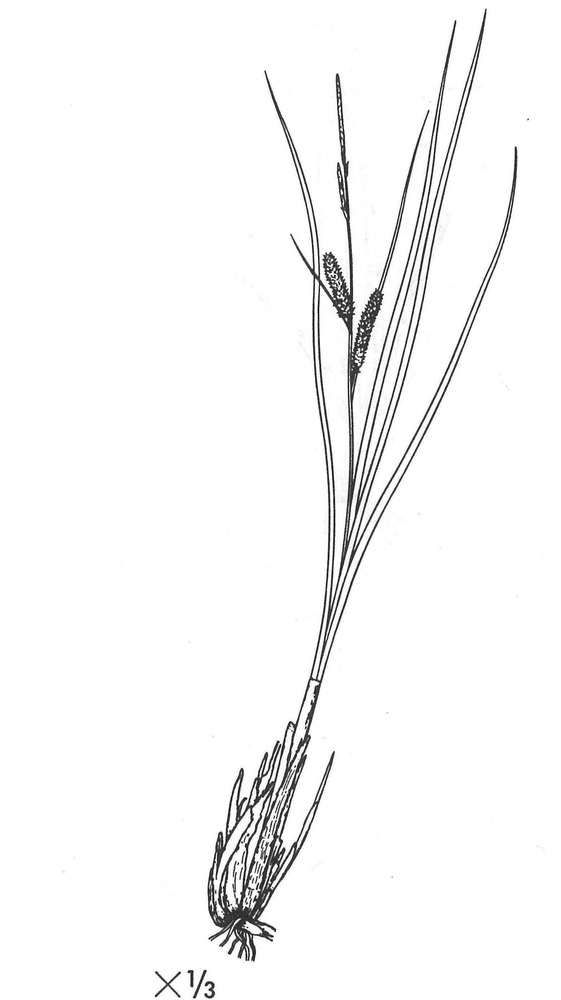| Carex rostrata Stokes | |||
| |||
| Family | Cyperaceae — APG family: Cyperaceae | ||
| Synonyms | Carex vesicaria, Carex utriculata Boott, Carex exsiccata | ||
| Description | Light green, with thick, horizontal rhizomes penetrating deep into mud (rarely present in herbarium specimens); culms glabrous, thick, spongy, with broad, gray- ish-to-reddish sheaths at base; leaves 4-8 mm wide; lowest bract longer than inflor- escence; 2—4 apical spikes staminate, the lateral 2-3 cylindrical pistillate, in age somewhat drooping; scales ovate, acute; perigynia longer than scales, ovate or flask- shaped, nerved, with slenderly conical, bidentate beak, ascending, or in age spread- ing. | ||
| Ecology | Wet shores, swamps. Described from Great Britain. | ||
| Uses | The lower part of the plant is eaten by the Eskimos. |
This is a digital representation of Eric Hultén’s ‘Flora of Alaska and Neighboring Territories: A Manual of the Vascular Plants’, which was published by Stanford University Press in 1968. The book was digitized by C. Webb (at UAMN) as part of the Flora of Alaska project, with funding by the US NSF (Grant 1759964 to Ickert-Bond & Webb), and with permission of Stanford University Press. Data and images © 1968 Board of Trustees of the Leland Stanford Jr. Univ. Usage licence: Creative Commons BY-NC-SA 4.0. NB: You may find OCR errors; please refer to the hard-copy if in doubt.
